Describe How a Fission Nuclear Reactor Power Plant Works
Those tubes heat a separate waters source to create steams. These elements are contained in fuel rods.

The Fission Process Mit Nuclear Reactor Laboratory
They employed U-235 as a solid fuel which is surrounded by water.

. The uranium fission takes place inside the nuclear reactor. According to the US. The water in the cores is heated by nuclear fission then pumped into tubes inside the heat exchangers.
These either drive a ships propellers or turn electrical generators shafts. This water is transported via the primary circuit to a heat exchanger steam generator that produces water steam. Energy Information Association nuclear power plants turn ordinary fission into fuel with the help of enriched uranium.
The way a nuclear power plant works can be simplified into five stages. The fission products undergo extreme deceleration where the KE is converted to heat. To generate heat inside the reactor the operators introduce extra neutrons which cause the.
A nuclear reactor works by using the energy that is released when the nucleus of a heavy atom splits. Those tubes heat a separate water source to create steam. Heres how the process works.
Uranium and plutonium are most commonly used for fission reactions in nuclear power reactors because they are easy to initiate and control. Fission takes place inside the reactor of a nuclear power plant. There is no combustion in a nuclear reactor.
Nuclear fission is the primary process of generating nuclear energy. This process is known as fission see diagram below. That process is called fission.
In reactors fission occurs when uranium atoms are hit by slow. At nuclear power plants the heat to make the steam is created when uranium atoms split - called fission. Nuclear fission reactors are designed such that they can sustain chain reaction.
What is a commonly used isotope in a nuclear fission reactor. Over the last several decades scientists have addressed the problem of nonrenewable natural resources such as fossil fuels. You heat water in a boiler it turns to steam and the steam is used to drive turbine generators that generate electricity.
The reactor is powered using continuous fission reactions to generate a continuous flow of energy. Nuclear reactors are used at nuclear power plants for electricity generation and in nuclear marine propulsionHeat from nuclear fission is passed to a working fluid water or gas which in turn runs through steam turbines. That steam then drives turbines to generate electricity source.
The chain reaction means if the reaction induces one or more reactions. The steam then turns on an electric generator to generate electricity. Describe how a fission nuclear reactor power plant works.
A nuclear power plant is a plant where electricity is produced using as fuel not oil coal or natural gas but the nuclei of atoms. We use nuclear reactors to generate electricity making use of the nuclear fission reaction. It releases a large amount of energy that heats the coolant water circulating at a very high pressure.
Neutrons trigger nuclear fission. The water acts are coolant which helps to maintain temperature of nuclear reactor. The heat from the nuclear fission is passed to a working fluid which in turn runs through steam turbines.
Hence the possibility exists for creating a chain reaction. The steam then turns an electric generator to produce electricity. While some plants use coal gas or oil as the primary fuel source many nuclear energy plants use uranium.
In order to turn nuclear fission into electrical energy nuclear power plant operators have to control the energy given off by the enriched uranium and allow it to heat water into steam. Inside a nuclear power plant is a nuclear reactor where heavy elements like plutonium or uranium fuel nuclear fission reactions. Basically a nuclear fission power plant operates much like a coal-fired power plant.
Vattenfall A nuclear reactor is driven by the splitting of atoms a process called fission where a particle a neutron is fired at an atom which then fissions into two smaller atoms and some additional neutrons. Heres how it works. At the center of the reactor is the core which contains uranium fuel.
Nuclear fission happens naturally every day. A nuclear reactor formerly known as an atomic pile is a device used to initiate and control a fission nuclear chain reaction or nuclear fusion reactions. The main difference is the type of fuel used to produce heat.
This is why the element emits radiation and why its a natural choice for the induced fission that nuclear power. The energy released by fission in these reactors heats water into steam. When a U-235 nucleus absorbs an extra neutron it quickly breaks into two parts.
The fuel rods where the fission chain reactions occur create enormous amounts of heat energy. The water in the core is heated by nuclear fission and then pumped into tubes inside a heat exchanger. Humans are using fossil fuels at a rapid rate and scientists believe that one day we will.
Nuclear power is the use of nuclear reactions to produce electricityNuclear power can be obtained from nuclear fission nuclear decay and nuclear fusion reactions. Presently the vast majority of electricity from nuclear power is produced by nuclear fission of uranium and plutonium in nuclear power plantsNuclear decay processes are used in niche applications. In nuclear fission atoms are split apart to form smaller atoms releasing energy.
The kinetic energy produced during the fission reaction is converted into thermal energy. Nuclear energy facilities work much like any other power station that uses heat and steam to generate electricity. Each time a U-235 nucleus splits it releases two or three neutrons.
Uranium for example constantly undergoes spontaneous fission at a very slow rate. Most of the energy 85 is released in the form of the kinetic energy of the split parts. The Ringhals Nuclear Power Plant home to four reactors capable of generating 20 of Swedens electricity demand Image.
The uranium fuel is formed into ceramic pellets. The core water cycles back to the reactor to be reheated and the process is repeated. The core water cycles the reactor back to heat and the process is repeated.
When the reactor is in operation U-235 breaks down into smaller atoms During this process neutrons and heat is released. Nuclear power plants use heat produced during nuclear fission to heat water. There are currently over 430 fission reactors in operation worldwide providing approximately 17 of the energy used each year.
Formed into ceramic pellets encased in hard metal cladding the radioactive fuel is placed in 12-foot fuel rods which are bundled inside the center or core of the reactor. Pressurized Water Reactors keep water under pressure so that it heats but does not boil. The main difference then is how the heat is generated.
The fission process produces free neutrons 2 or 3.
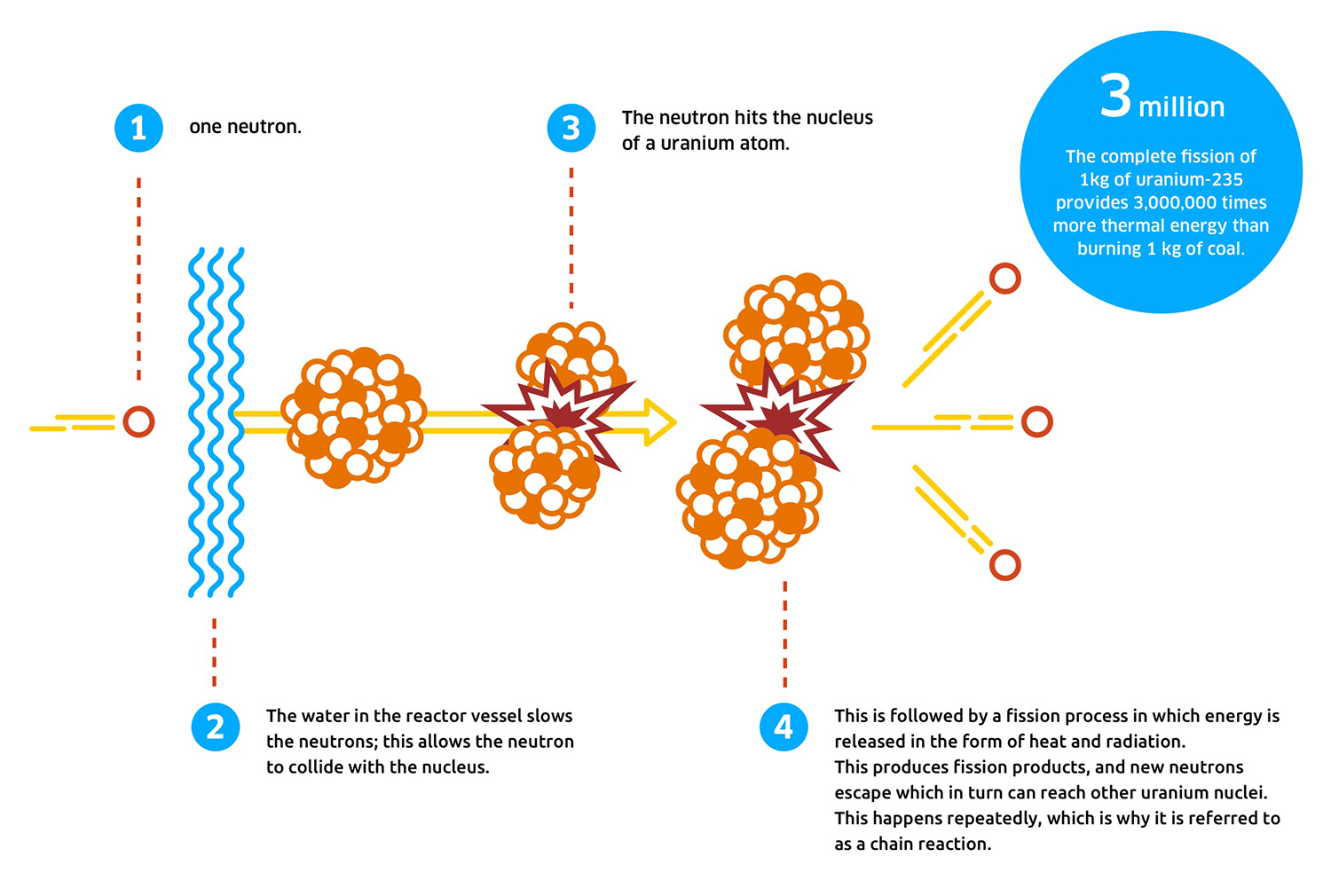
How Does A Nuclear Power Plant Work Engie Electrabel
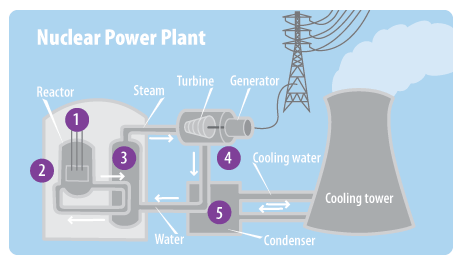
Nuclear Energy A Student S Guide To Global Climate Change Us Epa
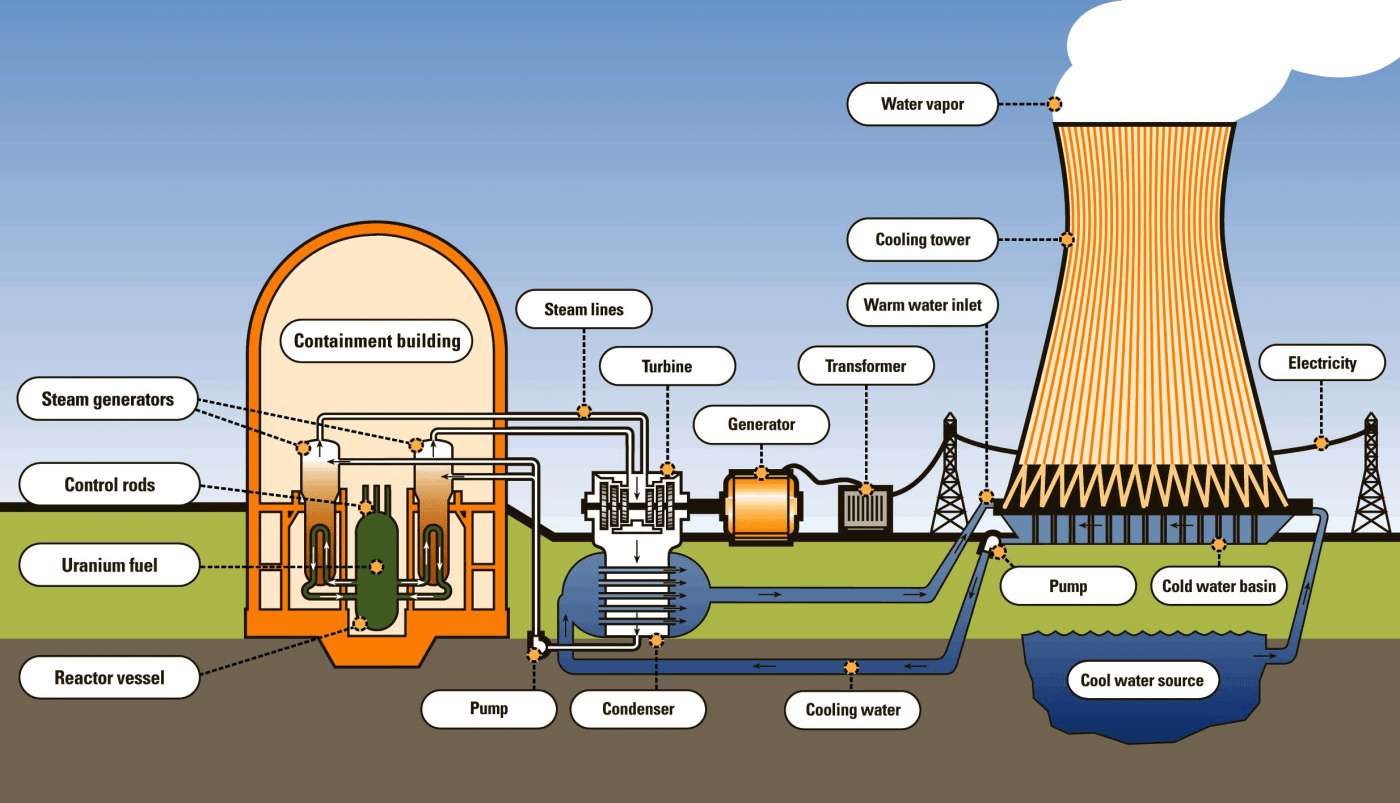
What Are The Different Components Of A Nuclear Power Plant Foro Nuclear

Image Gallery Inside A Nuclear Power Plant Nuclear Power Plant Nuclear Power Nuclear Energy

Nuclear Reactor Introduction Main Components And Types Of Nuclear Reactor
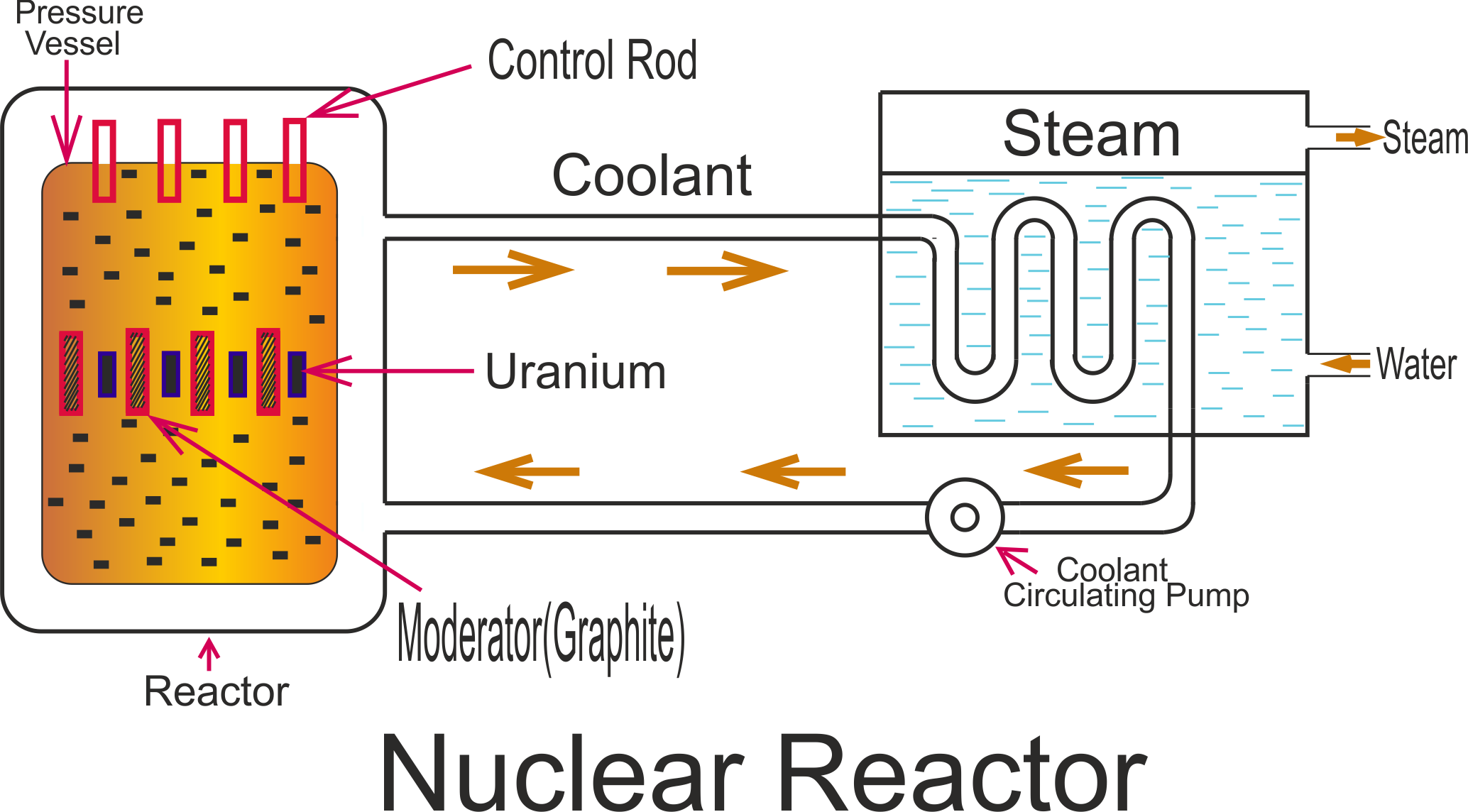
Working Principle Of Nuclear Power Plant

Nuclear Energy Nuclear Fission Reactor Moderators Videos Examples
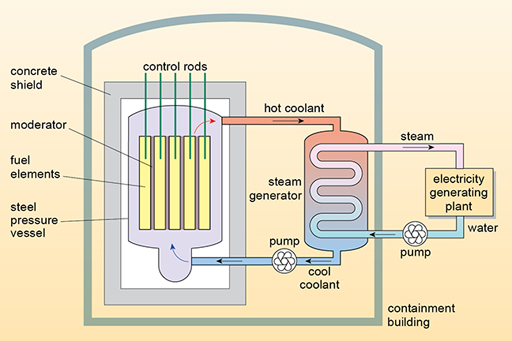

Comments
Post a Comment